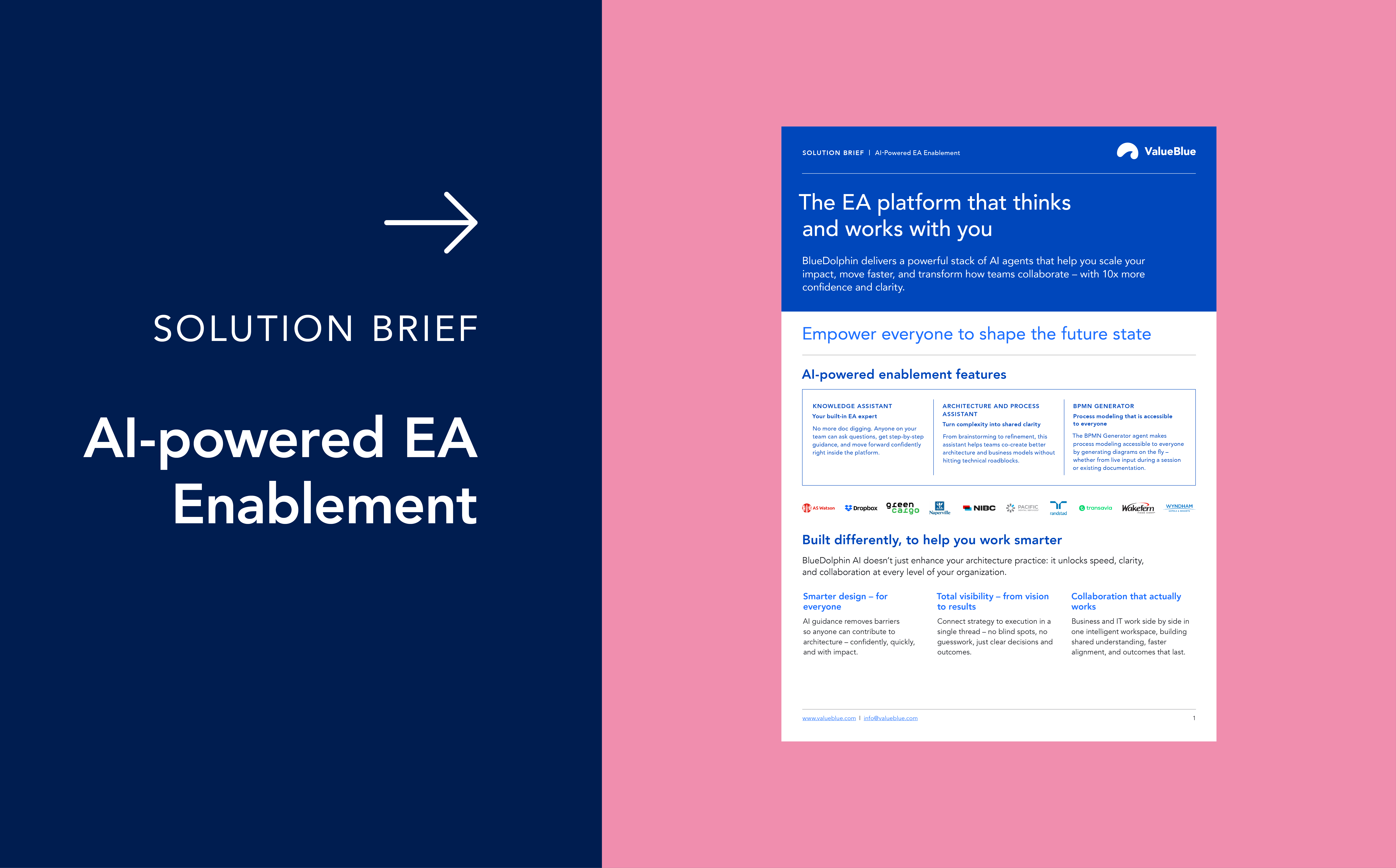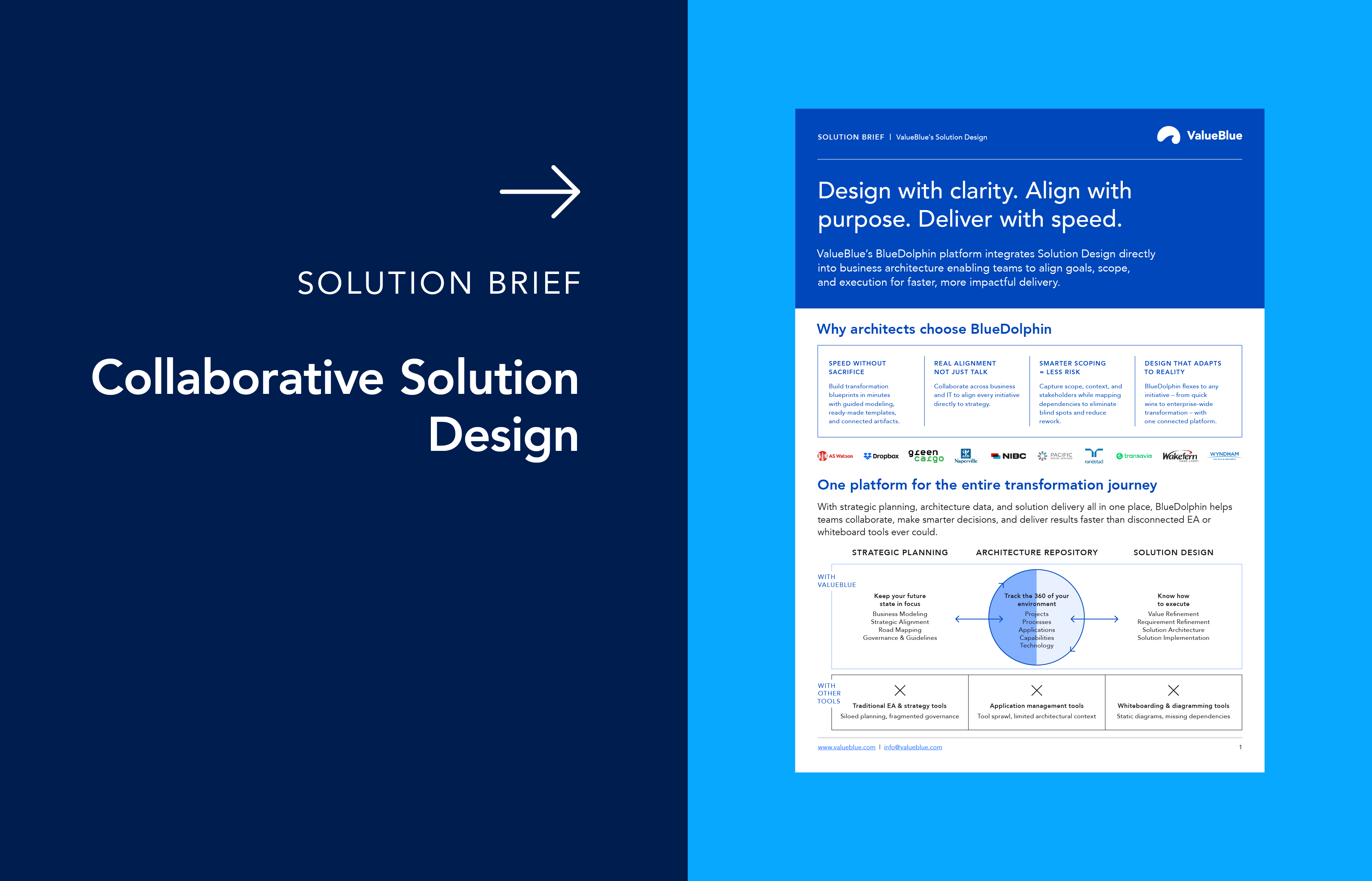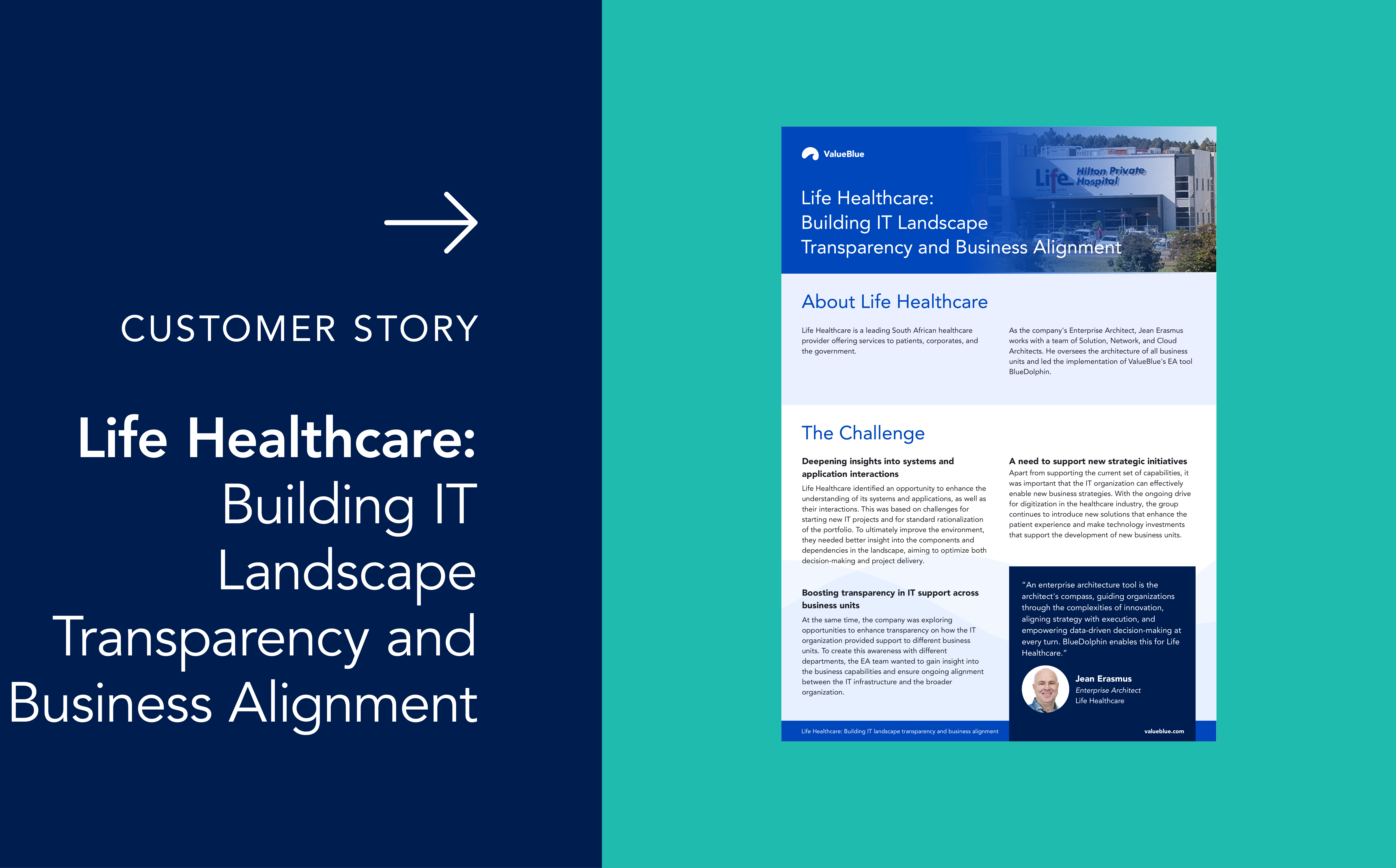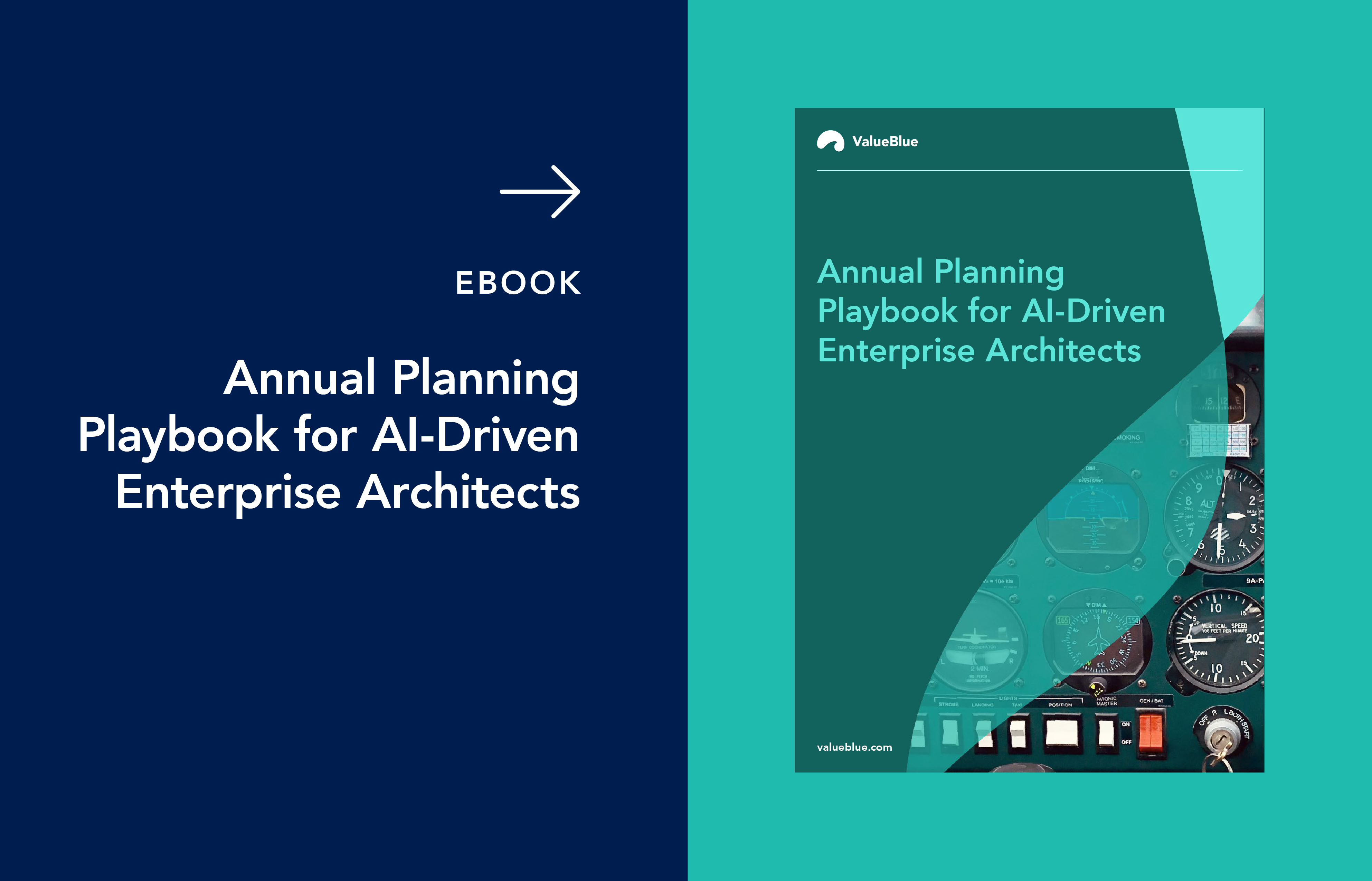How to Break Down Complex Application Portfolios in 3 Steps
Many organizations today struggle with outdated systems, cloud tools, and too many software applications. As technology and business needs change, a messy IT setup can waste money and cause confusion.
That’s where Application Portfolio Management (APM) and Enterprise Architecture (EA) come in. Together, they offer a smarter way to cut through the complexity, make better decisions, and align IT with business goals.
In this article, we share a simple three-step method to clean up and organize your application portfolio, drawing on the best of both APM and EA.
Why application sprawl hurts your business
Modern enterprises often manage a large number of applications. The growth of applications is fueled by company expansion, mergers, independent teams choosing their own tools, and the fast rise of cloud technology. The result is a tangled web of systems with overlapping functionalities, inconsistent data, and hidden dependencies. Without a clear strategy, organizations risk:
- Wasted IT spend due to redundant or underutilized applications.
- Increased security and compliance risks from outdated or unsupported systems.
- Operational inefficiency as employees navigate disjointed tools.
- Inability to respond quickly to market changes due to a rigid IT landscape.
Application Portfolio Management, integrated with Enterprise Architecture, provides the structure and insight needed to address these challenges. Here are the three steps that offer a proven path to clarity and control:
Step 1: Inventory and map the application landscape
The first step is to establish a comprehensive application inventory of all applications in use across the organization. This inventory should capture key details for each application, including:
- Name, description, and purpose.
- Business owner and IT owner.
- Deployment model (on-premises, cloud, hybrid).
- Associated costs (licensing, maintenance, support).
- User base and usage metrics.
- Technical dependencies and integrations.
- Lifecycle stage (active, under review, retiring).
Why is this important?
Without a complete and accurate inventory, organizations cannot make informed decisions about which applications to keep, invest in, or retire. Mapping dependencies and integrations is equally crucial, as it reveals how applications interact with each other and with core business processes. This step often uncovers hidden redundancies, unsupported systems, and critical applications that may be at risk.
Best practices:
- Use automated discovery tools and integrations with existing IT management systems to accelerate data collection.
- Involve stakeholders from both IT and business units to validate inventory data and ensure completeness.
- Document application dependencies, data flows, and integration points to understand the broader ecosystem.
Step 2: Assess, analyze, and align with business objectives
With a clear inventory in place, the next step is to assess each application’s value, cost, risk, and alignment with business goals. This analysis should answer key questions:
- Does the application support a critical business capability?
- Are there overlapping or redundant applications serving the same function?
- What is the total cost of ownership versus the business value delivered?
- Are there security, compliance, or technical risks associated with the application?
- How well does the application align with current and future business strategies?
Why is this important?
This assessment enables organizations to prioritize applications based on their strategic importance, cost-effectiveness, and risk profile. It also highlights opportunities for rationalization: consolidating, replacing, or retiring applications that no longer deliver sufficient value.
Best practices:
- Develop a standardized evaluation framework incorporating both quantitative (cost, usage, performance) and qualitative (business fit, user satisfaction) criteria.
- Engage business stakeholders to ensure alignment with evolving business needs and strategies.
- Use visual tools such as heatmaps and capability maps to illustrate application value and fit within Enterprise Architecture.
Step 3: Rationalize, optimize, and govern the portfolio
After gaining a deep understanding of the current landscape and each application’s value, organizations can move to the rationalization and optimization phase. This involves making targeted decisions to:
- Retire obsolete or redundant applications.
- Consolidate overlapping tools into a single, more efficient solution.
- Invest in applications that deliver high business value or are critical for future growth.
- Modernize legacy systems that are essential but technically outdated.
Why is this important?
Rationalization streamlines the application landscape, reducing costs, minimizing risk, and freeing resources for innovation. It also improves agility, making it easier to adapt to changing business needs and technology trends.
Best practices:
- Establish a governance framework to ensure ongoing portfolio management, with clear roles and responsibilities for data maintenance, decision-making, and compliance.
- Define and monitor key performance indicators (KPIs) to track the impact of rationalization efforts.
- Schedule regular portfolio reviews to ensure continued alignment with business strategy and to identify new optimization opportunities.
- Foster cross-functional collaboration between IT, business, and architecture teams to ensure decisions are holistic and sustainable.
The role of Enterprise Architecture in Application Portfolio Management
Enterprise Architecture plays a critical role in turning Application Portfolio Management from a one-time clean-up effort into a continuous, value-driven practice. Rather than focusing solely on reducing costs or eliminating redundancies, EA brings a strategic perspective, ensuring that every application decision supports broader business goals.
Enterprise Architecture maps how business processes, data, technology, and goals are connected. This helps organizations make smart, future-ready decisions. It helps identify not just which applications to keep or retire, but why, based on how each one contributes to the company’s capabilities and long-term direction.
ValueBlue’s approach brings this connection to life. It integrates APM directly with EA practices, giving organizations the ability to link application data to business capabilities, transformation initiatives, and strategic roadmaps in real time. This means leaders can see exactly how changes in the application landscape will impact the business, and vice versa.
Transform your application portfolio with a smarter, connected strategy
This close alignment between APM and EA is what sets mature organizations apart. It shifts the focus from short-term cost-cutting to long-term agility, enabling ongoing innovation, faster decision-making, and better alignment between IT and business strategy.
Ready to transform your application portfolio? ValueBlue’s BlueDolphin platform offers a step-by-step, integrated approach to Application Portfolio Management and Enterprise Architecture. Book a demo today.






